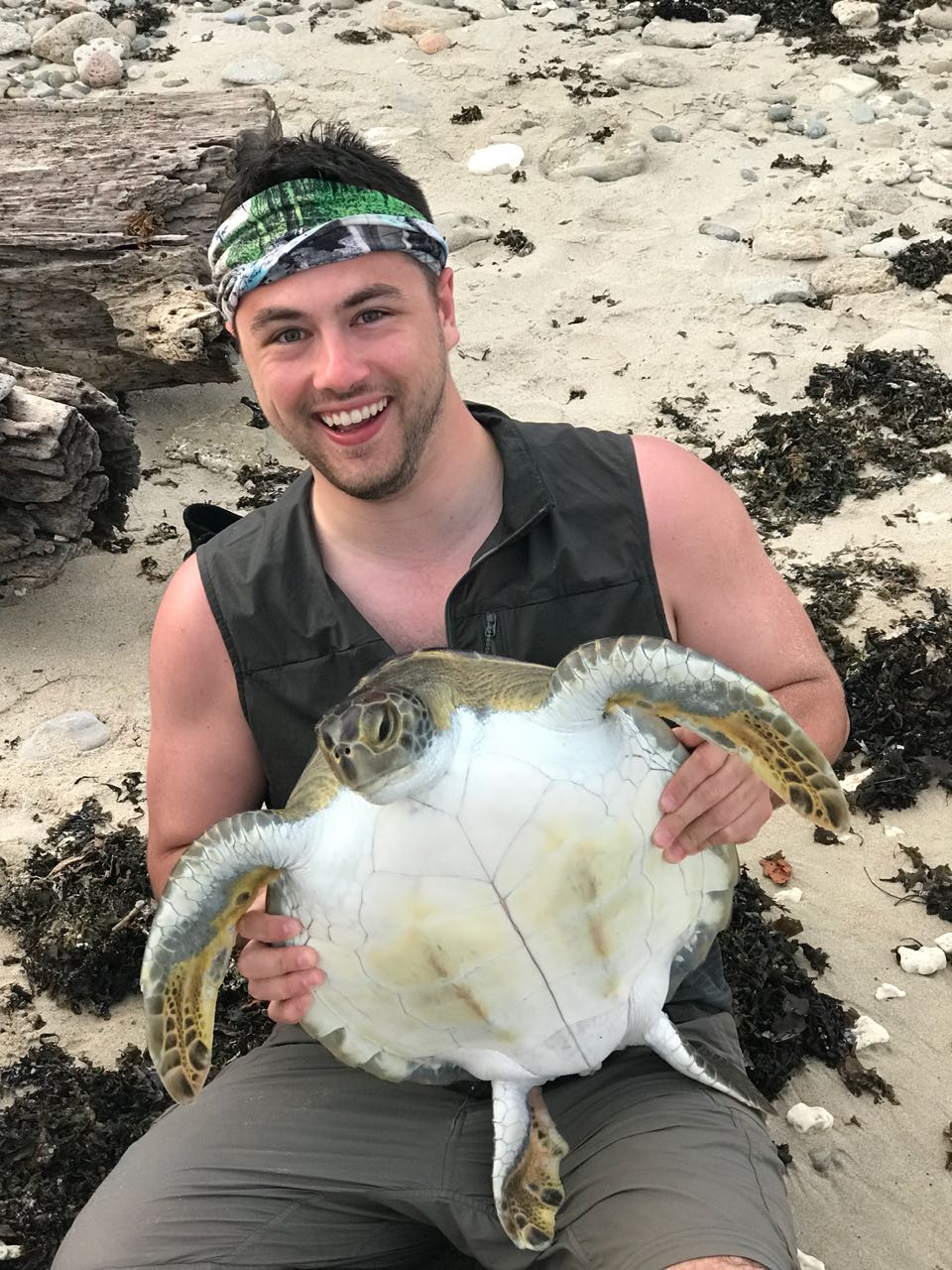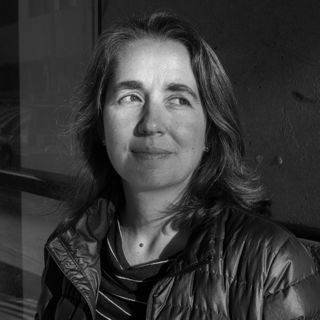With new technologies revolutionizing data collection, wildlife researchers are becoming increasingly able to collect data at much higher volumes than ever before. Now we are facing the challenges of putting this information to use, bringing the science of big data into the conservation arena. With the help of machine learning tools, this area holds immense potential for conservation practices. The applications range from online trafficking alerts to species-specific early warning systems to efficient movement and biodiversity monitoring and beyond.
However, the process of building effective machine learning tools depends upon large amounts of standardized training data, and conservationists currently lack an established system for standardization. How to best develop such a system and incentivize data sharing are questions at the forefront of this work. There are currently multiple AI-based conservation initiatives, including Wildlife Insights and WildBook, that are pioneering applications on this front.
This group is the perfect place to ask all your AI-related questions, no matter your skill level or previous familiarity! You'll find resources, meet other members with similar questions and experts who can answer them, and engage in exciting collaborative opportunities together.
Just getting started with AI in conservation? Check out our introduction tutorial, How Do I Train My First Machine Learning Model? with Daniel Situnayake, and our Virtual Meetup on Big Data. If you're coming from the more technical side of AI/ML, Sara Beery runs an AI for Conservation slack channel that might be of interest. Message her for an invite.
Header Image: Dr Claire Burke / @CBurkeSci

Explore the Basics: AI
Understanding the possibilities for incorporating new technology into your work can feel overwhelming. With so many tools available, so many resources to keep up with, and so many innovative projects happening around the world and in our community, it's easy to lose sight of how and why these new technologies matter, and how they can be practically applied to your projects.
Machine learning has huge potential in conservation tech, and its applications are growing every day! But the tradeoff of that potential is a big learning curve - or so it seems to those starting out with this powerful tool!
To help you explore the potential of AI (and prepare for some of our upcoming AI-themed events!), we've compiled simple, key resources, conversations, and videos to highlight the possibilities:
Three Resources for Beginners:
- Everything I know about Machine Learning and Camera Traps, Dan Morris | Resource library, camera traps, machine learning
- Using Computer Vision to Protect Endangered Species, Kasim Rafiq | Machine learning, data analysis, big cats
- Resource: WildID | WildID
Three Forum Threads for Beginners:
- I made an open-source tool to help you sort camera trap images | Petar Gyurov, Camera Traps
- Batch / Automated Cloud Processing | Chris Nicolas, Acoustic Monitoring
- Looking for help with camera trapping for Jaguars: Software for species ID and database building | Carmina Gutierrez, AI for Conservation
Three Tutorials for Beginners:
- How do I get started using machine learning for my camera traps? | Sara Beery, Tech Tutors
- How do I train my first machine learning model? | Daniel Situnayake, Tech Tutors
- Big Data in Conservation | Dave Thau, Dan Morris, Sarah Davidson, Virtual Meetups
Want to know more about AI, or have your specific machine learning questions answered by experts in the WILDLABS community? Make sure you join the conversation in our AI for Conservation group!
- @womble
- | he/him
AI Researcher, with 30+ years experience in academia and industry. Currently consulting for a company using drone imagery to analyse property heat loss. Expertise in machine learning, NLP, python, Google Cloud. https://julianrichardson.net
- 0 Resources
- 6 Discussions
- 6 Groups
- 0 Resources
- 0 Discussions
- 2 Groups
I am a herpetologist interested in bioacoustics, evolution and conservation biology. Currently, I am a postdoc fellow at Universidade Federal de Santa Maria (UFSM), Brazil.
- 0 Resources
- 0 Discussions
- 5 Groups
- @Harsha
- | He/Him
I am a marine biologist / acoustic ecologist from Australia. Fascinated by bioacoustics, I always look forward to learning from people in conservation!
- 0 Resources
- 0 Discussions
- 11 Groups
- 0 Resources
- 3 Discussions
- 8 Groups
Holder of BSc in Applied Zoology. Assistant Ecologist at Ruaha National park.


- 0 Resources
- 7 Discussions
- 12 Groups
University of Zurich
PhD student at the University of Zürich (CH) in PopEcol group, working with camera traps and mammals
- 0 Resources
- 0 Discussions
- 8 Groups
- @fsattar
- | Farook
Farook Sattar received his Technical Licentiate and PhD degrees from Lund University, Sweden. He obtained his B.Eng and M.Eng degrees from Bangladesh University of Engineering & Technology (BUET), Dhaka in Electrical and Electronics Engineering.
- 0 Resources
- 0 Discussions
- 2 Groups
- @LucyD
- | She/Her
Software developer and wildlife ecologist

- 0 Resources
- 2 Discussions
- 5 Groups
- @sroilo
- | she/her
- 0 Resources
- 0 Discussions
- 4 Groups
- @nabilla.nuril
- | She/Her
University College London (UCL)
- 0 Resources
- 0 Discussions
- 11 Groups
- @sarah_dalrymple
- | she/her
Royal Society for the Protection of Birds (RSPB)

- 0 Resources
- 9 Discussions
- 3 Groups
HawkEars is a deep learning model designed specifically to recognize the calls of 328 Canadian bird species and 13 amphibians.
13 May 2025
Hi together, I am working on detecting causalities between land surface dynamics and animal movement by using satellite-based earth observation data. As this is might be your expertise I kindly ask for your support...
8 May 2025
Weeds, by definition, are plants in the wrong place but Weed-AI is helping put weed image data in the right place. Weed-AI is an open source, searchable, weeds image data platform designed to facilitate the research and...
7 May 2025
The intern will help the Global Science team expand our understanding of nature-based solutions through artificial intelligence (AI) and support our efforts to create a model for data collection and analysis that can...
18 April 2025
Driving off-highway vehicles (OHVs), which contributes to habitat degradation and fragmentation, is a common recreational activity in the United States and other parts of the world, particularly in desert environments...
8 April 2025
Conservation International is proud to announce the launch of the Nature Tech for Biodiversity Sector Map, developed in partnership with the Nature Tech Collective!
1 April 2025
$3 millions of funding for NGO in Brazil using AI for conservation / $ 3 milhões em financiamento para ONGs no Brasil que usam IA para conservação!
1 April 2025
Funding
I have been a bit distracted the past months by my move from Costa Rica to Spain ( all went well, thank you, I just miss the rain forest and the Ticos ) and have to catch up on funding calls. Because I still have little...
28 March 2025
Funding
The AI Weather Quest, organised by the European Centre for Medium-Range Weather Forecasts (ECMWF), is an ambitious international competition designed to harness artificial intelligence (AI) and machine learning (ML) in...
25 March 2025
InsectSet459 - the first large-scale open dataset of insect sounds, featuring 26,399 audio clips from 459 species of Orthoptera and Cicadidae.
24 March 2025
Naturalis is looking for a postdoc in AI for Ultrasonic Bioacoustic Monitoring
24 March 2025
Funding
The Compute for Climate Fellowship is a global R&D funding program that empowers climate tech startups to leverage advanced cloud computing and AI in the fight against climate change.
22 March 2025
June 2025
event
July 2025
October 2025
event
event
November 2023
event
73 Products
Recently updated products
16 Products
Recently updated products
| Description | Activity | Replies | Groups | Updated |
|---|---|---|---|---|
| Hi Colin, At the BearID Project, we are working on a similar problem for brown bears. We are currently using machine learning methods developed for human facial recognition (... |
|
AI for Conservation | 6 years 2 months ago | |
| Hi Ollie, Great article, thank you! I mostly work with responsible AI in other contexts, at Doteveryone.org.uk and the Trust & Technology Initiative at the... |
|
AI for Conservation | 6 years 3 months ago | |
| In case you missed it, last year the British Ecological Society published A Guide to Reproducible Code in Ecology and Evolution... |
|
AI for Conservation | 7 years 1 month ago | |
| Hey Steffen, I know you've had a student working on this challenge for the past year - how is this project progressing? If you (or your student) have a moment,... |
|
AI for Conservation | 7 years 6 months ago | |
| Hi Kate, It's really exciting to hear that you've now launched the challenge, congratulations on getting to this point! It's going to be interesting to... |
|
AI for Conservation | 7 years 7 months ago | |
| If you're interested, you can check out the live recordings from past events (links below take you to the videos): August: The Blockchain The Blockchain's potential... |
|
AI for Conservation | 7 years 8 months ago | |
| Hypraptive and Brown Bear Research Network collaboration to develop a deep learning, brown bear face identification system: BearID Project. [Disclosure: I am a member of... |
|
AI for Conservation | 7 years 8 months ago | |
| It looks like they haven't updated for a couple of years do you know if it is still active or are they changing to a different system like tensor flow? |
|
AI for Conservation | 7 years 8 months ago | |
| Here' s a press release we put out today talking about how we're using a deep convolutional neural network to find and curate whale... |
|
AI for Conservation | 8 years ago | |
| For those interested: in the acoustics channel I have posted news on our sound event recognition sensor, using conv-net: https://... |
|
AI for Conservation | 8 years ago | |
| Ah! Thanks for posting this Tom. It's such a well designed, simple to understand video series, and the backing track is utterly delightful. Given the... |
|
AI for Conservation | 8 years 1 month ago | |
| Hello all, I'm looking at using a combination of machine learning and satellite imagery to identify and count individual animals,... |
|
AI for Conservation | 8 years 7 months ago |
Introductions
10 December 2015 8:13pm
17 January 2016 9:08pm
Hi,
I am jason Holmberg from WildMe.org. I am one of the developers of Wildbook (wildbook.org), an open source data management platform for wildlife research. I'm using ML as part of the IBEIS.org project to boost and metascore multiple computer vision algorithms for individual humpback and sperm whales. David, I would love to speak offline if you have the time: jason@wildme.org.
Cheers,
Jason
Google Releases Tensor Flow
18 November 2015 12:10am
20 December 2015 7:05pm
"TensorFlow, you see, deals in a form of AI called deep learning. With deep learning, you teach systems to perform tasks such as recognizing images, identifying spoken words, and even understanding natural language by feeding data into vast neural networks. "
Would this be applicable to an acoustic monitoring network? For example. my research has shown tigers have unique, identifiable vocalizations down to the individual and sex. If this software is applied to my recording network for tigers, would it be able to automatically recognize and categorize these individuals?
For example: when it hears Tiger 108, it would know and then input that it heard Tiger 108 at a particular time and date.
11 January 2016 12:38pm
The catch will be (and for any neural network or AI type learning I would expect the same) the training phase. If you are able to tell the sounds apart or identify a specific sound as belonging to a certain individual, the AI should afterwards be able to automatically identify the critical factors needed to distinguish the voices of the individuals. But it will need enough input from each individual as well as the different vocalizations used by tigers. AFAIKT it will be able to do this automatically afterwards, but I am not sure if (a) you will get enough identifiable vocalisations and (b) with a wide enough range of typical tiger vocalisations for it to be really reliable. Training on zoo animals might work? I am also interested in this, but for jackals instead of tigers.
11 January 2016 2:30pm
I'd like to suggest our open source package Wildbook (http://www.wildbook.org) as a base data management platfor for this. I agree with the above that there are a number of challenges around the vocalizations themselves, but having the identity information in a good database and data model is a great foundation. That's what we're doing for our computer vision/deep learning project at www.IBEIS.org.
Our non-profit WildMe.org is running both. Feel free to contact us with questions. We have played with time series matching (often used for speech recognition)...but actually for whale flukes. Would be happy to discuss potential for audio ID.
Deep Learning Image Recognition of Species In Global Wildlife Crime Reporting
31 December 2015 7:28pm
Big Data and Conservation: Deluge or Drought?
22 December 2015 12:00am
Cheap Space, DIY Imaging and Big Data
21 December 2015 12:00am
The Impact of the Internet of Things
10 December 2015 12:00am
Harnessing Big Data to Combat Illegal Wildlife, Timber and Fisheries Trade
 Rachel Kramer
and 2 more
Rachel Kramer
and 2 more
26 November 2015 12:00am
Technology for Traceability
 Daniel Brizuela
and 1 more
Daniel Brizuela
and 1 more
26 November 2015 12:00am
From Data Collection to Decisions
6 November 2015 12:00am
The Social Lives of Conservation Technologies and Why They Matter
2 November 2015 12:00am








































10 December 2015 8:41pm
To start things off...
I'm David J Klein. My background is in deep learning, machine learning, neuroscience, neuromorphic computing, and signal processing. I've been doing the startup thing Silicon Valley for the last 11 years after being in academia for a while. I've worked on products ranging from speech recognition systems, to cloud-based deep learning platforms. These days, some use the blanket term "AI".
For the last several years I've been developing software for Conservation Metrics which gives their analysists the ability to use deep learning to process large volumes of audio and image data from remote sensors in order to monitor population density changes of endangered species, detect collisions of birds and bats with infrastructure, and find rare and elusive species.
More broadly, I'm interested in integrating many disparate sensing domains from eDNA, to land-based sensors, to GIS data in order to provide tools to conservation scientists and ecologists that will enable them to develop a higher resolution understanding of the health of ecosysems around the globe and their response to positive or negative human interventions.
I'm looking forward to interacting with you all. Please let me know what other questions you have for me, and other ways I can help.
Regards,
David